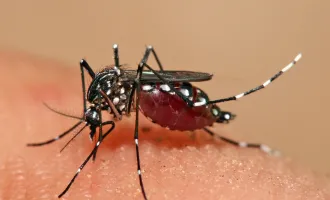Externship Program Provides Valuable Community Experience
Directors of dental clinics from across Northern California gathered at UCSF Parnassus last Friday, at a symposium to share their experiences in community health.
Every year, dental students in their third and fourth years do externships at these clinics to learn about dental care in under-served communities.
The externship program — “the crown jewel of our dental school education,” according to Dr. George Taylor, Department Chair in Preventive and Restorative Dental Sciences — serves as a rich educational tool for young dentists, and also dispatches more providers to work at public clinics, which always have unmet need.
Over breakfast, Dr. Bahar Amanzadeh, Director of the externship program, offered opening remarks. A packed schedule of lectures, discussions and panels followed, covering topics pertinent to community dentistry.
Led by externship site directors and many outstanding educators from the School of Dentistry, the talks included presentations on oral surgical procedures, pediatric dentistry, the art of clinical feedback and externship program development.
“In pediatric dentistry, you can do true preventive care,” Dr. Brent Lin, Director of the Pre-Doctoral Pediatric Dentistry Program, reminded the attendees. “A patient can come in with a disease-free mouth, and you can actually prevent them from developing any caries.”
The majority of clients at most community clinics are children, and, indeed, pediatric care is the most efficacious approach to public health. Unfortunately, the populations treated in the externship clinics rarely come in disease-free.
During lunch, Dr. John Featherstone, Dean of the School of Dentistry, presided over an appreciation of Dr. Nelson Artiga, who last year stepped down after many fruitful years as director of the externship program.
Dr. Artiga, a venerable figure at the dental school, discussed the history and significance of the externship program, which began in 1971 at Clinica de la Raza in Oakland and has since expanded to 19 participating clinics.
“At one time, dental education was pretty much just about cranking out private practitioners with very little understanding of under-served communities,” said Artiga.
“The current model has shifted philosophically towards public health. Now we provide our students with a full package so that they have an understanding of private practice and the community-based dental practice.”
Community clinics under the Affordable Care Act will be doubling or tripling, so this aspect of dental education is more and more important, he added. “There is an epidemic of childhood oral disease, and we’re trying our very best to see that under-served populations do not suffer disproportionately.”
The experiences of students at these various community clinics, which are located as far away as Eureka, Mount Shasta and Chico, confirm the value of the externship program to the School of Dentistry.
“It’s great to see patients in a fast-paced setting,” said Mike Kurylo, a fourth-year dental student, “We go from two patients a day at the school clinic to 10 patients a day on externship. Not only did I learn a lot, but also I was able to see firsthand the huge need for dental care for the majority of California.”


